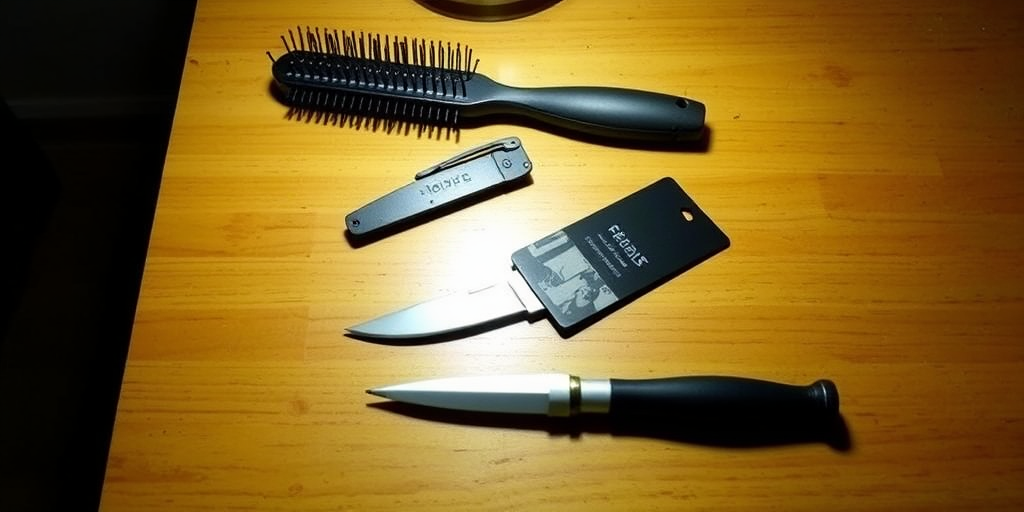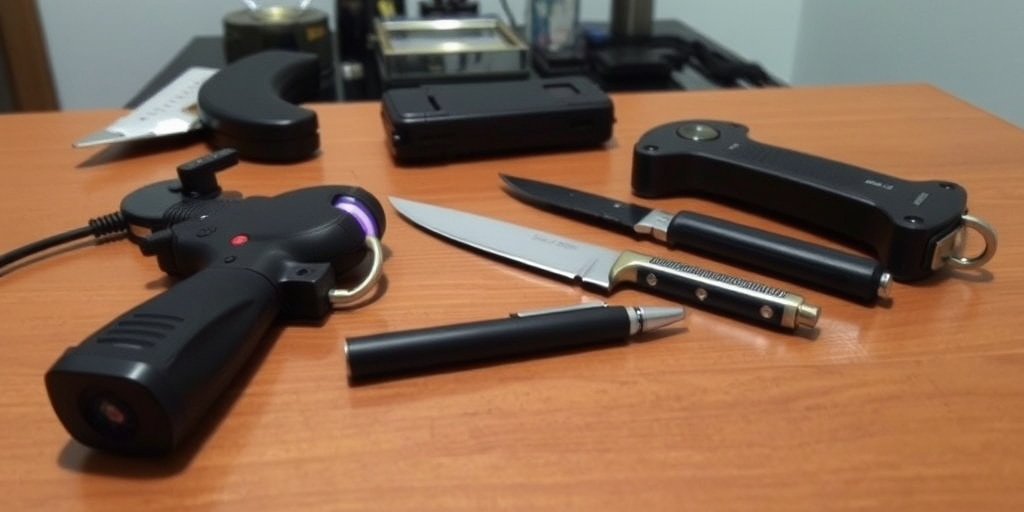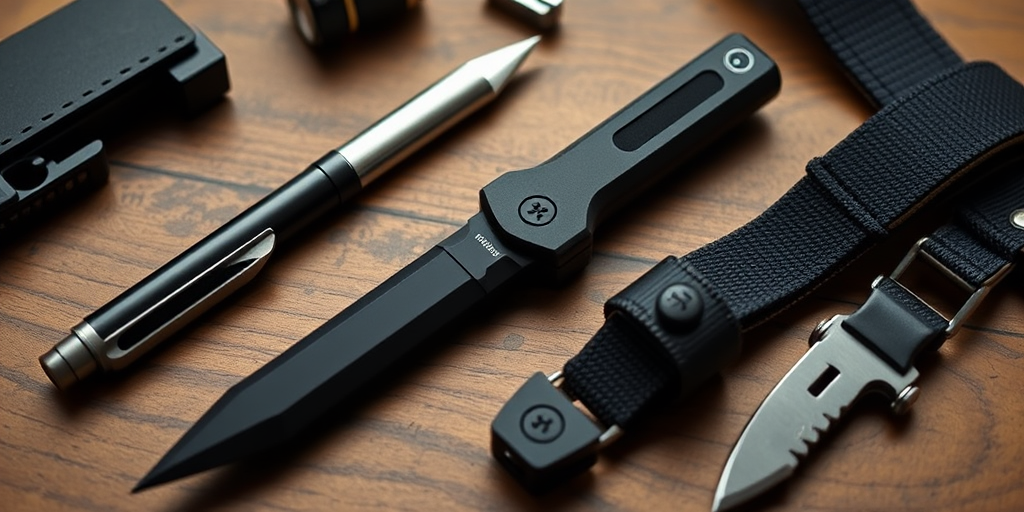Is your everyday carry truly equipped for unexpected danger? In this deep dive, we explore cutting-edge tools—from discreet hairbrush stun guns and ultra-thin utility knives to innovative tactical pens—designed for self-defense while meeting legal and usability standards.
I will break down their unique advantages, compare safety features, and examine practical considerations, offering insights into everyday protection. This analysis aims to guide you to a well-informed choice that prioritizes both innovation and personal security.
Evaluating Legal, Safety, and Practical Considerations for What is the Best Weapon to Carry for Self-Defense

What is the best weapon to carry for self-defense? Precision demands evaluating legal, safety, and risk factors. The correct choice must satisfy both local regulations and robust safety features. Immediate clarity arises from asking: What legal restrictions and built-in triggers are crucial? The answer is that compliance with jurisdictional mandates is paramount alongside integrated safety measures that minimize accidental activation.
In practice, assessing a self-defense weapon involves scrutinizing regulatory compliance, which is essential to avoid unintended liabilities. Products such as the Palm Pepper Spray, equipped with a flip-top safety cap and secure locking mechanism, illustrate how built-in safeguards not only deter attacks but also ensure the device is legally usable. Additionally, design elements like those found in bulletproof hoodies underscore the necessity for secure construction that withstands various forms of attack while remaining unobtrusive.
Practical considerations demand thorough training and familiarity with device operation. Without proper usage, even the best-designed weapon can fail under stress. Consistent training builds the confidence and competence needed to execute defensive actions accurately.
- Compliance with local laws
- Safety features and triggers
- Training and proper usage
By centering legal adherence and safety triggers in the decision-making process, one can effectively balance risk and liability with practical performance, ensuring that proper training reinforces the weapon’s intended protective role.
Expert Analysis on Non-Lethal and Lethal Options for What is the Best Weapon to Carry for Self-Defense

What defines a non-lethal option? Non-lethal alternatives, like the Pain Pen and Streetwise Stunbrella, offer lower risk, ease of use, and fewer legal issues. These devices incapacitate a threat without inflicting permanent harm, ensuring users remain within regulatory boundaries. Refinement in design emphasizes fail-safe features and minimal collateral damage in high-stress situations.
Conversely, what is the advantage of a lethal option? Lethal weapons provide higher effectiveness and advanced design attributes at the cost of increased liability and legal constraints. The Pocket Shot, for example, combines discreet design with potent stopping power. While its lethal potential secures a decisive response, its deployment demands strict adherence to local laws and intensive training to mitigate risks.
The clear dichotomy between the two strategies stresses the importance of situational awareness in choosing the ideal self-defense weapon.
Real-world application often favors hybrid options, blending attributes from both categories. Tactical pens and concealed knives deliver versatility, offering lethal force when necessary while retaining non-lethal capabilities for varied defense scenarios.
- Non-lethal: Lower risk, ease of use, fewer legal issues
- Lethal: Higher effectiveness, advanced design, increased liability
- Hybrid options: Tactical pens, concealed knives for versatile response
Evaluating performance under stress requires balancing immediate defensive needs with long-term legal and training commitments. Each option demands a thorough understanding of its operational dynamics. Tactical analysis should guide the selection process, ensuring chosen weapons align with the user’s environment, legal context, and personal preparedness level.
Real-World Reviews: User Testimonials and Performance Insights on What is the Best Weapon to Carry for Self-Defense

What do real-world reviews indicate about self-defense devices? User feedback confirms that devices like tactical hair clips and the folded umbrella stun gun deliver high satisfaction and proven reliability. Detailed testimonials demonstrate that these tools perform effectively in real-life emergency scenarios.
Users report that the tactical hair clips provide consistent, unnoticed protection while maintaining ease of concealment, meeting the demands of critical situations without sacrificing style. Similarly, the folded umbrella stun gun is praised for its discreet design and dependable activation when needed. Precise measurements of performance under pressure reveal that these devices are not only practical but also reliable across variable conditions.
Expert assessments emphasize that real-world usage is best evaluated by considering:
- User satisfaction and reliability
- Performance under real-world conditions
- Comparative feedback on ease of carry and effectiveness
These insights are derived from verified performance statistics and firsthand accounts. Users often highlight the innovative, dual-purpose nature of these self-defense tools, noting that they meet both functional and legal requirements while providing confidence. The emphasis remains on practicality, ensuring that each device offers a balance between concealed design, straightforward operation, and overall effectiveness in protecting its owner.
Final Words
We navigated the dynamic landscape of self-defense weapons by dissecting legal boundaries, safety mechanisms, and maintenance protocols.
We evaluated cutting-edge designs from hairbrush stun guns to tactical pens, emphasizing their usability and concealed carry advantages.
Key factors include local compliance, proper training, and real-world performance.
Ultimately, what is the best weapon to carry for self-defense hinges on personal needs and legal awareness.
Our insights aim to foster confident, informed choices for everyday combat readiness.
FAQ
What is the most effective self-defense weapon for everyday carry?
A: The most effective self-defense weapon for everyday carry is pepper spray. It combines range, effectiveness, and legal compliance while remaining lightweight and accessible in most jurisdictions.
What features should I look for in a tactical pen?
A: A tactical pen should feature aircraft-grade aluminum construction, reliable writing function, glass-breaking capability, and ergonomic grip design for both writing and defensive purposes.
What are the key differences between lethal and non-lethal self-defense weapons?
A: Non-lethal weapons like pepper spray and stun guns offer defensive options with lower legal risk. Lethal weapons provide maximum stopping power but require extensive training and proper licensing.
How often should I maintain my self-defense tools?
A: Self-defense tools require monthly maintenance checks. Test electronic devices, inspect mechanical components, and verify expiration dates on chemical deterrents like pepper spray.
Which self-defense weapon is best for concealed carry?
A: A tactical pen offers optimal concealed carry capabilities. It combines everyday utility with defensive features, maintains professional appearance, and remains accessible in most environments.
What is the recommended training frequency for self-defense weapons?
A: Practice with your self-defense weapon weekly. Focus on draw speed, target acquisition, and deployment under stress to build muscle memory and confidence.
What makes a hairbrush stun gun effective for self-defense?
A: The hairbrush stun gun combines disguised appearance with high-voltage deterrence. Its dual-purpose design provides immediate accessibility while maintaining a non-threatening appearance.
How do I choose between different types of pepper spray?
A: Select pepper spray based on range, spray pattern, and concentration level. Gel formulations offer reduced blowback risk, while stream patterns provide extended reach.
